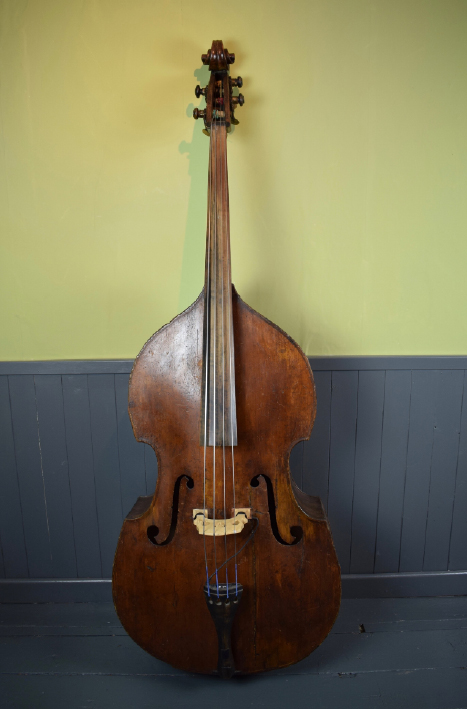
The Violone, a forerunner of the modern double bass, is the largest and lowest-pitched bowed, (or plucked) instrument in the string section. The violone is a standard member of the orchestra’s string section, as well as the concert band, and is featured in concertos, solo, and chamber music in Western classical music.
The violone is played with a bow (arco), or by plucking the strings (pizzicato), or via a variety of extended techniques. In orchestral repertoire and tango music, both arco and pizzicato are employed. The violone is generally regarded as a modern descendant of the string family of instruments that originated in Europe in the 15th century, and as such has been described as a bass Violin.
The history of the violone is tightly coupled to the development of string technology in the 1650’s, as it was the advent of overwound gut strings, which first rendered the instrument more generally practicable, as (over‑) wound strings attain low notes within a smaller overall string diameter than non-wound strings. Before the 20th century many violones had only three strings, in contrast to the five to six strings typical of instruments in the viol family or the four strings of instruments in the violin family. The violone is the only modern bowed string instrument that is tuned in fourths (like a viol), rather than fifths.
The violone’s proportions are dissimilar to those of the violin and cello; for example, it is deeper (the distance from front to back is proportionally much greater than the violin). In addition, while the violin has bulging shoulders, most violones have shoulders carved with a more acute slope, like members of the viol family. Many very old violones have had their shoulders cut or sloped to aid playing with modern techniques. Before these modifications, the design of their shoulders was closer to instruments of the violin family.
Source: Wikipedia